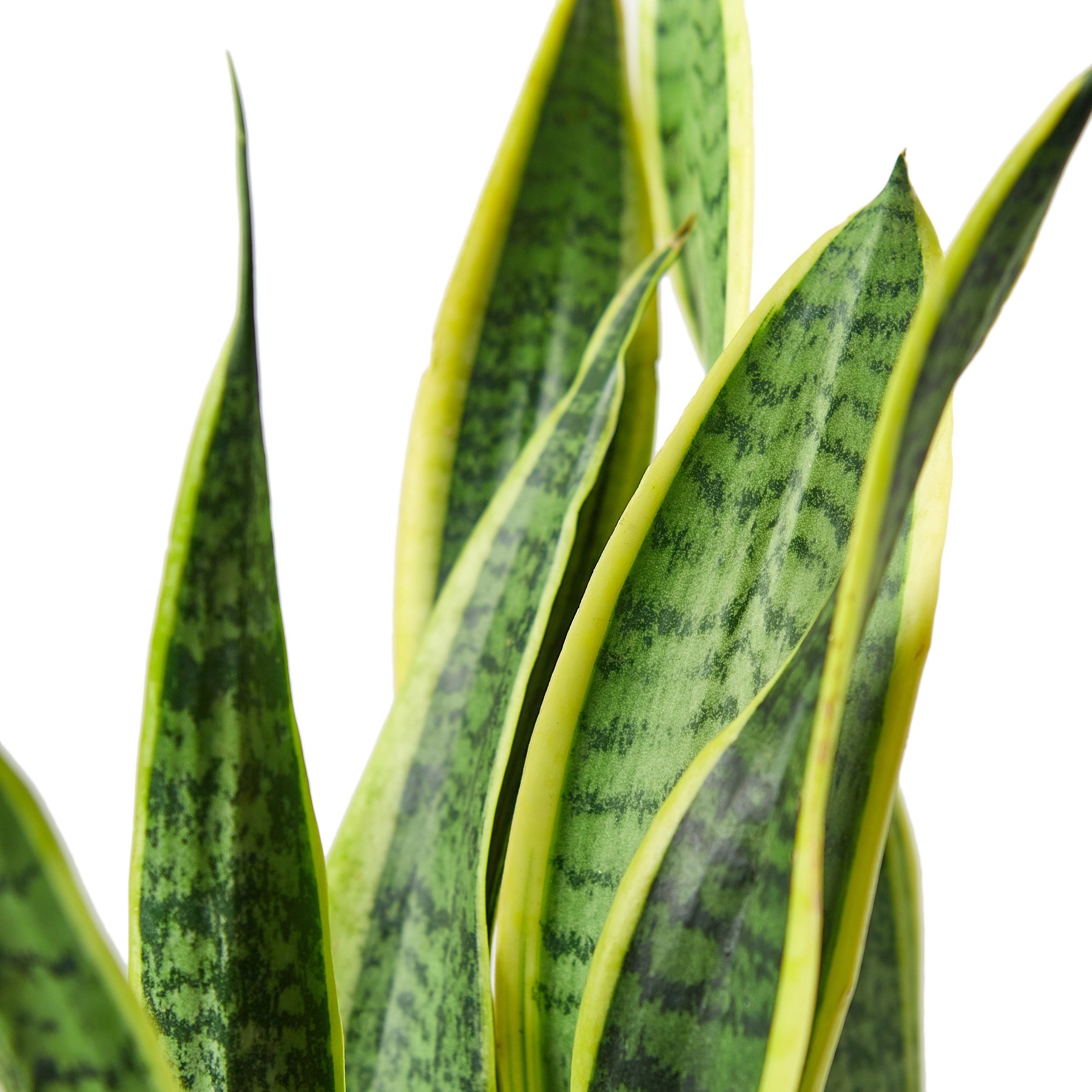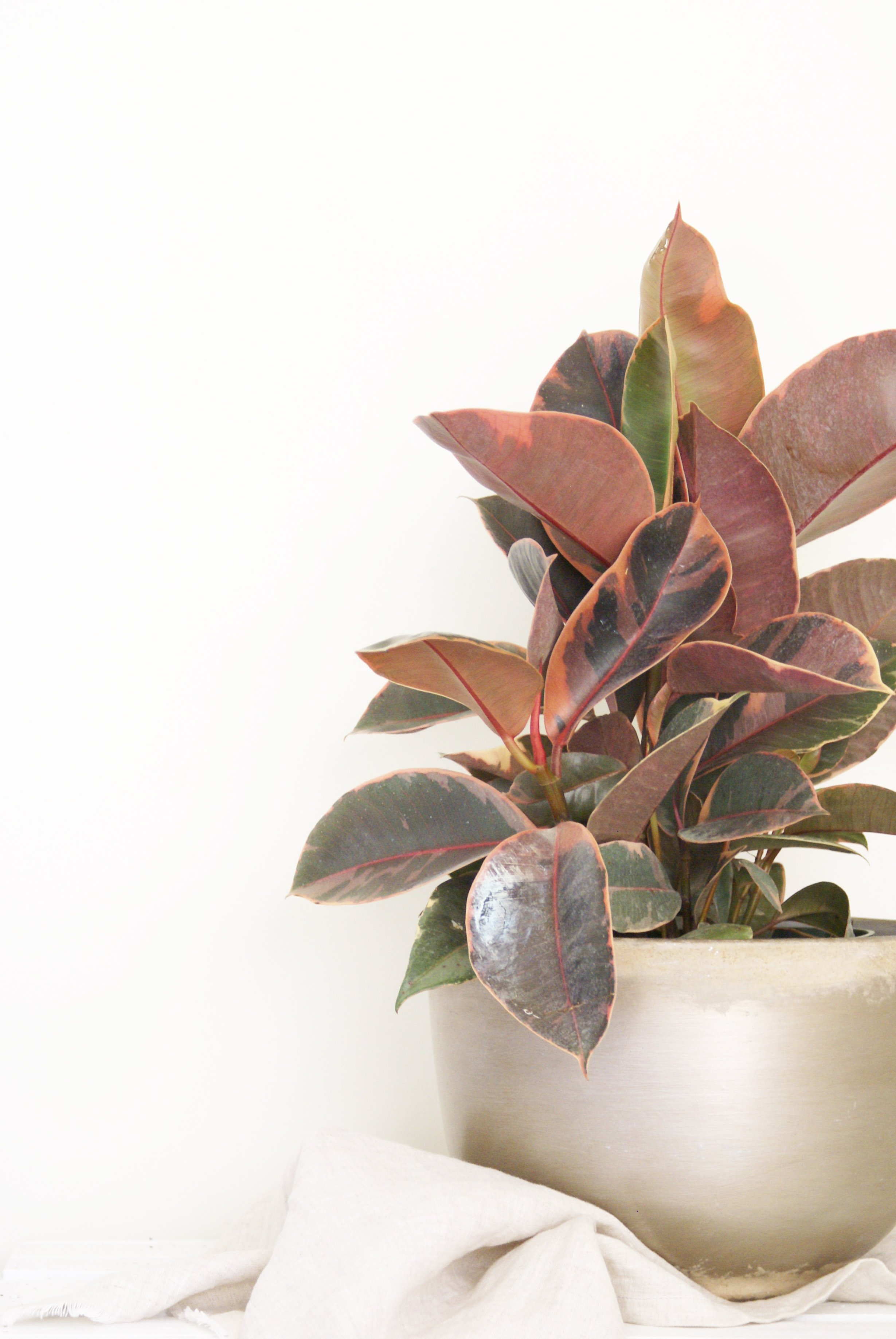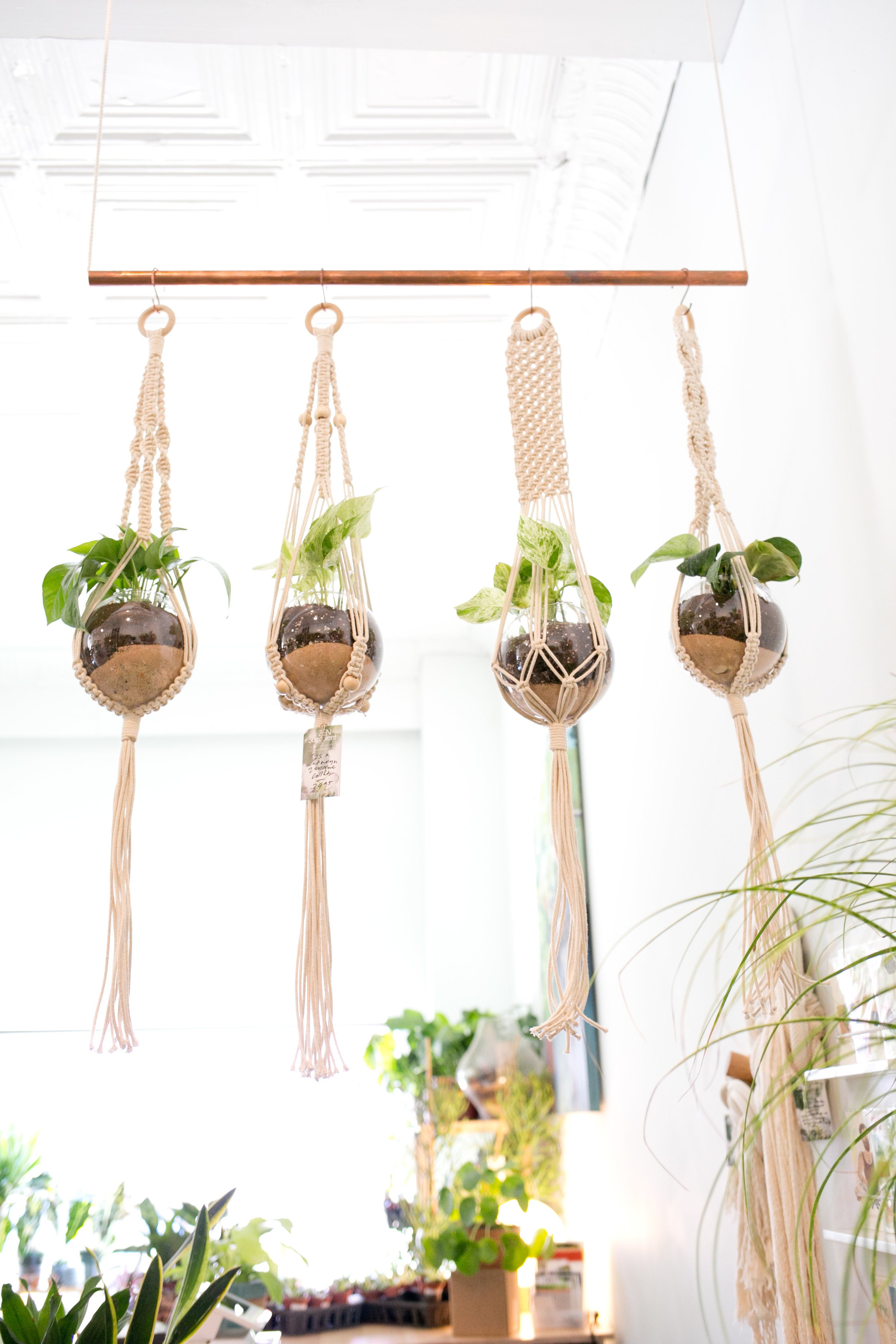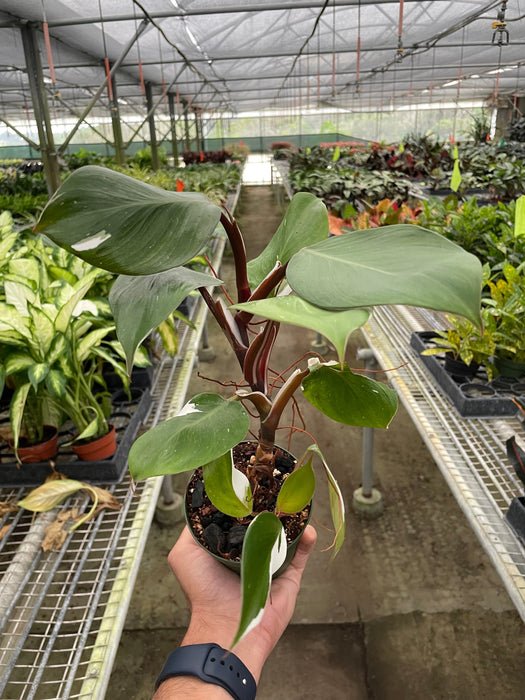Houseplants: A Guide to Filling your Home with Prosperity
“Grow positive thoughts.”
Bringing plants into your home is a great way to improve your mood, reduce stress, and even improve your air quality. But did you know that some plants are also believed to bring good fortune? This week we take a look at 10 plants known to bring good luck and prosperity to your home.
1. Jade Plant
The jade plant, also known as Crassula ovata, is a popular succulent native to South Africa. It is prized for its thick, fleshy leaves that resemble jade stones, hence its name. This evergreen plant is known for its hardiness and easy maintenance, making it a favorite choice for indoor gardening. Beyond its aesthetic appeal, the jade plant holds a significant cultural significance in many parts of the world. It is believed to bring good luck, fortune, and prosperity to those who have it in their homes or offices. According to ancient Chinese teachings, the jade plant possesses an energy known as 'feng shui,' which promotes harmony, balance, and positive vibes in its surroundings. The jade plant's reputation as a symbol of good fortune is rooted in its vibrant green foliage. In many cultures, green is associated with growth, renewal, and abundance. The plant's rounded, coin-shaped leaves further reinforce this symbolism, resembling ancient Chinese coins that were believed to bring wealth and prosperity.
〰️ 🍀
〰️ 🍀
Caring for a jade plant is relatively easy. It thrives in bright, indirect sunlight and requires infrequent watering, as it stores water in its thick leaves. Overwatering should be avoided, as it can lead to root rot. The plant can be propagated by taking stem cuttings and allowing them to root in well-draining soil.
In addition to its symbolic value, the jade plant is also known for its air-purifying properties. It helps remove toxins such as benzene, formaldehyde, and trichloroethylene from the air, making it an excellent choice for improving indoor air quality.
2. Money Plant
The money plant is a fast-growing vine with small, round leaves. It is believed to attract wealth and abundance. The money plant, also known as the Chinese evergreen or the pothos, is a fast-growing vine that is native to the Solomon Islands. It is a popular houseplant due to its attractive, heart-shaped leaves and its reputation for bringing good luck and prosperity. The money plant is a vigorous grower and can quickly reach a height of several feet. It is best suited for growing in a bright, indirect light, but it can also tolerate low light conditions. The plant should be watered regularly, but allowed to dry out slightly between waterings.
The money plant is easy to propagate and can be started from cuttings taken from a healthy plant. Simply place the cuttings in a glass of water or moist soil and they will quickly root. The money plant is a low-maintenance plant that is perfect for busy people who want to add a touch of greenery to their home or office.
In addition to its reputation for bringing good luck, the money plant is also said to have a number of other benefits, including:
Improving air quality by removing toxins such as benzene, formaldehyde, and trichloroethylene from the air.
Reducing stress and anxiety by creating a calming and peaceful environment.
Boosting creativity and productivity by increasing oxygen levels in the air.
Helping to improve sleep by reducing stress and anxiety.
🍀
🍀
3. Lucky Bamboo
Lucky bamboo is a popular feng shui plant that is believed to bring good luck and prosperity. It is often given as a gift to symbolize good wishes.Lucky bamboo, scientifically known as Dracaena sanderiana, is a popular feng shui plant that has captured the hearts of many with its graceful appearance and symbolism. Originating in West Africa, this resilient plant is believed to bring an abundance of good luck, prosperity, and positive energy to its owners. Its slender, upright stalks and lush green leaves are said to represent the five elements of feng shui: wood, water, fire, earth, and metal. Given its positive connotations, lucky bamboo is often exchanged as a thoughtful gift to convey heartfelt wishes and blessings. It is a symbol of growth, harmony, and balance, making it a perfect choice for celebrating special occasions or offering support during challenging times. The beauty of lucky bamboo lies not only in its symbolism but also in its adaptability. It can thrive in various lighting conditions, making it suitable for both indoor and outdoor spaces. With proper care, including regular misting and occasional pruning, lucky bamboo can flourish and remain vibrant for many years.
Whether displayed in the living room, office, or bedroom, lucky bamboo adds an elegant touch to any environment while promoting a sense of well-being. Its presence is believed to enhance the flow of positive chi energy, fostering a harmonious atmosphere and inviting good fortune into one's life.
In feng shui practice, lucky bamboo is often arranged in stalks of varying numbers, each holding its own significance. For instance, three stalks represent happiness, five stalks symbolize wealth, and eight stalks are associated with growth and prosperity. These arrangements are carefully placed in specific areas of the home or office to amplify their positive effects. By incorporating lucky bamboo into your living space, you embrace a time-honored tradition that combines natural beauty with ancient wisdom. It serves as a reminder to cultivate a positive mindset, welcome prosperity, and embrace the abundant blessings that life has to offer.
4. Peace Lily
The peace lily is a beautiful plant with white flowers and dark green leaves. It is believed to promote peace and harmony in the home.The peace lily, botanically known as Spathiphyllum, is a stunning and elegant plant cherished for its pristine white flowers and lush dark green leaves. Originating from tropical regions of America, this plant has become a popular choice for indoor gardening due to its air-purifying properties and its association with promoting peace and harmony in living spaces. The peace lily's delicate white flowers, resembling delicate sails, emerge from a central spadix, creating a captivating visual display. The contrast between the snowy blooms and the vibrant green foliage adds a touch of serenity and sophistication to any room. These flowers are not only aesthetically pleasing but are also believed to symbolize innocence, purity, and new beginnings. Native to the steamy rainforests of South America, the peace lily thrives in environments with high humidity and bright, indirect sunlight. Its glossy, ovate leaves not only add to its visual appeal but also contribute to its air-purifying capabilities. According to studies conducted by NASA, the peace lily effectively removes toxins such as benzene and formaldehyde from the air, making it a natural choice for improving indoor air quality.
🍀
🍀
Beyond its aesthetic and environmental benefits, the peace lily holds a special significance in many cultures. It is considered an auspicious plant in feng shui, believed to enhance the flow of positive energy (chi) and create a harmonious atmosphere in the home or workplace. Additionally, the peace lily is closely associated with promoting peace and tranquility, making it a thoughtful and symbolic gift for loved ones. Caring for a peace lily is relatively easy; however, providing the right conditions is essential for its optimal growth and continued beauty. Regular watering is necessary, ensuring that the soil remains moist but not waterlogged. It prefers bright, indirect light but can tolerate low-light conditions, making it adaptable to various indoor settings.
5. Snake Plant
The snake plant is a tall, slender plant with long, pointed leaves. It is believed to protect the home from negative energy and bring good luck. The snake plant, also known as the mother-in-law's tongue or the Sansevieria, is a tall, slender plant with long, pointed leaves. Originating from tropical West Africa, this plant is known for its striking appearance and air-purifying qualities.
The snake plant has a reputation for bringing good luck and protecting the home from negative energy, making it a beloved addition to many households. It is said to absorb toxins and release oxygen during the night, helping to improve indoor air quality. Its long, sword-like leaves add a touch of elegance and modern aesthetics to any room.
Caring for a snake plant is relatively easy as it does not require frequent watering and can tolerate low-light conditions. It prefers well-draining soil and bright, indirect light, but can adapt to a variety of environments. The snake plant is also resistant to most pests and diseases, making it a low-maintenance option for busy individuals or those new to gardening. Its air-purifying properties make the snake plant a valuable asset for removing toxins such as benzene, formaldehyde, trichloroethylene, and xylene from the air. It helps create a healthier indoor environment, contributing to overall well-being and reducing stress levels.
🍀
🍀
6. Rubber Plant
The rubber plant is a large, leafy plant that is believed to bring wealth and good fortune. It is also said to improve air qualityThe rubber plant, also known as Ficus elastica, is a popular houseplant prized for its large, glossy leaves and its air-purifying properties. Native to tropical regions of Asia, this evergreen plant can grow up to 10 feet tall indoors and even taller outdoors. Its thick, leathery leaves are a rich, deep green color and can be variegated with cream or yellow. The rubber plant is not only visually appealing but also believed to bring wealth and good fortune according to feng shui principles. It is often placed in the home or office to attract positive energy and promote prosperity. Additionally, it is said to improve air quality by removing toxins such as benzene, formaldehyde, and trichloroethylene from the air. These properties make the rubber plant a popular choice for both homes and businesses.
🍀
🍀
When caring for a rubber plant, it is important to provide it with bright, indirect light and well-draining soil. It should be watered regularly but allowed to dry out slightly between waterings. Overwatering can lead to root rot, which is a common problem with this plant. With proper care, the rubber plant can be a beautiful and rewarding addition to any space, adding a touch of greenery and potentially bringing a boost of positive energy and good luck.
7. Fiddle-Leaf Fig
The fiddle-leaf fig (Ficus lyrata) is a popular houseplant known for its large, lobed leaves that resemble the shape of a violin. It is native to western Africa, where it grows as a large tree. In recent years, the fiddle-leaf fig has gained popularity as an indoor plant due to its striking appearance and air-purifying abilities. In addition to its aesthetic appeal, the fiddle-leaf fig is also believed to bring good luck and prosperity. This belief is thought to have originated in China, where the plant is known as the "money tree." It is said that the more leaves a fiddle-leaf fig has, the more wealth and good fortune it will bring to its owner.
🍀
🍀
Whether or not you believe in the power of feng shui, there is no denying the beauty and elegance of the fiddle-leaf fig. It is a versatile plant that can add a touch of sophistication to any home or office. If you are looking for a low-maintenance plant that is both beautiful and meaningful, the fiddle-leaf fig is a great option. The fiddle-leaf fig is a relatively easy plant to care for, but it does have some specific requirements. It prefers bright, indirect light and well-draining soil. Water the plant regularly, but allow the soil to dry out slightly between waterings. Fertilize the plant monthly during the growing season (spring and summer).
The fiddle-leaf fig can grow quite large indoors, so it is important to repot it as needed. When repotting, use a potting mix that is well-draining and contains plenty of organic matter.
8. Pothos
The pothos is a fast-growing vine with heart-shaped leaves. It is believed to attract positive energy and bring good fortune.The pothos, renowned for its rapid growth and captivating heart-shaped leaves, holds a special place in many cultures. It has been revered throughout history for its remarkable ability to attract positive energy and bestow good fortune upon its surroundings. This belief has led to its widespread popularity as a cherished houseplant, where it thrives with minimal care, adding a touch of elegance and vitality to any space.
🍀
🍀
Originating from the lush tropical regions of Southeast Asia, the pothos is a resilient and adaptable vine. Its vibrant green leaves, adorned with distinctive variegations in shades of yellow or white, create a striking visual display that complements a variety of interior decors. As it cascades gracefully from hanging baskets or trails along shelves, the pothos exudes a sense of untamed nature indoors. Beyond its aesthetic appeal, the pothos has been embraced for its air-purifying qualities. Studies have shown that it effectively removes toxins such as formaldehyde, benzene, and trichloroethylene from the air, contributing to a healthier indoor environment. This remarkable ability makes it an ideal choice for homes, offices, and other indoor spaces.
In addition to its physical benefits, the pothos is steeped in symbolism and cultural significance. In feng shui, the ancient Chinese practice of harmonizing energy flows, the pothos is believed to enhance the overall chi or energy balance of a space. It is often placed in the eastern or southeastern sectors of a room to promote good health, wealth, and abundance. Furthermore, the pothos has become a symbol of friendship and goodwill. It is often exchanged as a thoughtful gift, carrying with it the heartfelt wish for happiness and prosperity for the recipient. Its enduring nature serves as a reminder of the strength and longevity of meaningful connections.
Caring for a pothos is relatively simple, making it an excellent choice for both seasoned plant enthusiasts and newcomers alike. It thrives in bright, indirect light but can tolerate low-light conditions. Regular watering is essential, but it is crucial to allow the soil to dry out slightly between waterings to prevent overwatering. With proper care, the pothos can flourish and continue to bestow its positive energy and good fortune for years to come.
9. Philodendron
The philodendron is a large, leafy plant with heart-shaped leaves that is native to tropical America. It is a member of the Araceae family, which also includes the ZZ plant and the peace lily. Philodendrons are valued for their attractive foliage and are often used as houseplants. They are also believed to bring good luck and happiness, making them a popular choice for gifts.
Philodendrons can grow to be quite large, with some species reaching heights of over 10 feet. They have long, trailing stems that are covered in large, glossy leaves. The leaves are typically dark green, but some varieties have variegated leaves with splashes of white or yellow.
🍀
🍀
Philodendrons are relatively easy to care for and make excellent houseplants. They prefer bright, indirect light and well-drained soil. They should be watered regularly, but should not be allowed to sit in water. Philodendrons are also susceptible to spider mites and mealybugs, so it is important to keep an eye out for these pests.
With proper care, philodendrons can live for many years and make a beautiful addition to any home.
10. ZZ Plant
The ZZ plant is a slow-growing plant with dark green leaves. It is believed to bring good luck and prosperity. The ZZ plant, also known as the Zanzibar Gem or ZZ, is a slow-growing, evergreen perennial plant that is native to Africa. It is a member of the Araceae family, which also includes peace lilies and philodendrons. The ZZ plant is known for its dark green, glossy leaves, which are arranged in a symmetrical, upright pattern. It can grow to a height of 2-3 feet indoors, and its leaves can reach a length of up to 12 inches.
🍀
🍀
The ZZ plant is a popular choice for indoor gardening because it is easy to care for and tolerates low light conditions. It prefers bright, indirect light, but it can also tolerate low light levels. The ZZ plant does not need to be watered frequently, as it is drought tolerant. It is important to allow the soil to dry out completely between waterings to prevent root rot. ZZ plants are believed to bring good luck and prosperity, and it is often given as a gift to friends and family. It is also said to help purify the air by removing toxins such as benzene and formaldehyde.
Here are some additional tips for caring for a ZZ plant:
Use a well-draining potting mix.
Fertilize the plant once a month during the growing season (spring and summer).
Repot the plant every 2-3 years as needed.
Keep the plant away from children and pets, as all parts of the plant are poisonous if ingested.
As advocates of green living, we at The ZEN Succulent would love to hear your stories about how indoor plants have influenced your life. Share your experiences in the comments below or tag us on social media with your indoor garden photos. Let’s spread the word about the healing power of plants!
Words By The ZEN Succulent
Inspiring everyone to embrace the world of plants, our collection features articles penned by The Sill's team of seasoned plant experts. Covering a range of plant care topics, because we truly believe Plants Bring Life, Joy and Inspirations™ .


















